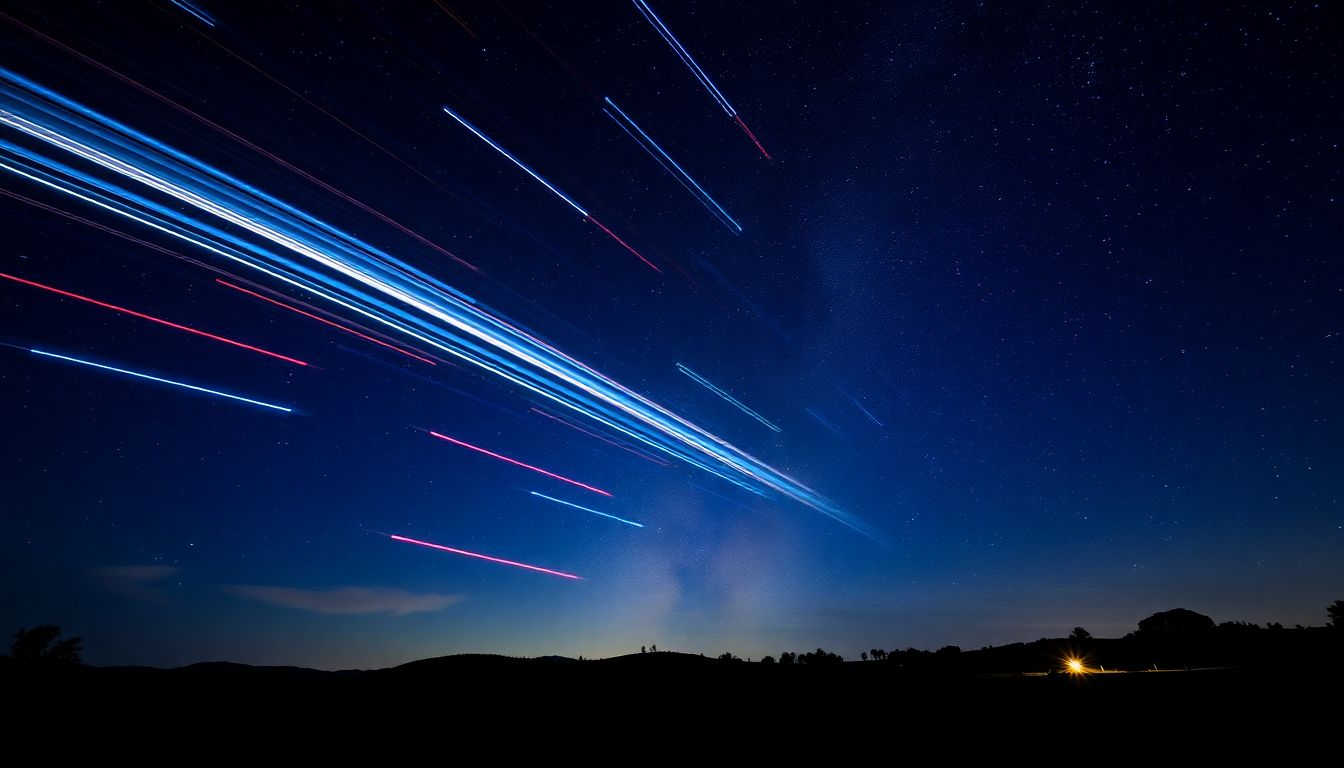
Why Do Some Lights Move Fast in the Sky? Understanding the Phenomenon
Introduction
Have you ever looked up at the night sky and seen a quick flash or streak of light? It’s a sight that can make your heart race with curiosity. Sometimes these lights seem to zip across the sky, leaving everyone wondering what they are. People see them during stargazing, space events, or even right outside their windows. These fleeting sights create a lot of questions and myths. So, what makes some lights in the sky move so fast? Learning the science behind these quick flashes helps clear up the mystery.
What Are Lights Moving Fast in the Sky? An Overview
Fast-moving lights in the sky are bright spots that seem to dash across the horizon in seconds. They can be natural or man-made. Some are stars or planets, which appear to move slowly due to Earth’s rotation. Others are airplanes, satellites, or even mysterious objects, often called UFOs. The key is understanding what causes lights to appear to move so rapidly. Many sightings are simple natural phenomena or created by human technology.
Natural Causes of Fast-Moving Lights in the Sky
The Movement of Celestial Bodies
Stars and planets seem to change position in the sky. This isn’t really movement, but Earth’s spin gives the illusion. For instance, Venus and Jupiter often look like bright moving lights. They often appear to dart across the sky quickly at certain times of the year or night. People might think they’re UFOs, but they’re just planets caught in the right place.
Meteors and Shooting Stars
Meteor showers light up the sky with rapid streaks of light. These are bits of space debris that burn up in Earth’s atmosphere. They can race across the sky in a second or less. During major meteor showers like Perseids or Geminids, thousands of meteors can be seen in a short time. Those quick flashes are some of the most common fast-moving lights in the sky.
Atmospheric Phenomena
Optical illusions and weather effects can create weird lights. Sometimes, reflections or mirages make distant lights seem closer or faster. Other phenomena, like ball lightning or sprites, may look like moving globes of light. These are rare but can give the impression of strange, quick-moving objects.
Artificial Sources of Fast Airborne Lights
Aircraft and Satellites
Airplanes are among the most common fast-moving sky lights. Their blinking lights and speed can make them look mysterious from the ground. Satellites orbit Earth at high speeds and can appear as bright moving dots. When they cross the sky, they often seem to zip by in seconds, especially at dusk or dawn.
Space Debris and Reentry
Spacecraft, rockets, or debris re-entering the atmosphere can create sudden streaks of light. These reentries are known for their bright, fast trails that look like shooting stars. For example, recent reentries of space stations or rocket boosters drew attention as they burned brightly and moved quickly across the sky.
Drones and Other Man-Made Objects
Modern drones with flashing lights can also be mistaken for strange movers. Their different flight patterns and blinking lights stand out at night. Because drones are small and often fly fast, they add to the list of quick-moving lights for sky watchers.
Factors Influencing Perception of Speed
Distance and Perspective
How far away an object is changes how fast it looks to you. Small, distant lights—like far-off planes or satellites—can seem to race across the sky because they cover large portions quickly. Closer objects may move slower, even if they are moving just as fast.
Human Eye and Brain Limitations
Your eyes and brain sometimes fool you into thinking objects are moving faster than they really are. Optical illusions happen easily, especially in dark settings. Moving lights can seem to zig-zag or speed up, depending on how your brain interprets them.
Lighting Conditions and Environmental Effects
Darkness, fog, or atmospheric layers can affect how we see moving lights. They make bright objects stand out and sometimes distort their shape or speed. A light against a dark sky looks brighter and more distinct, making it seem faster or more mysterious.
Scientific Instruments and Methods for Identifying Sky Lights
Telescopes and Binoculars
Using these tools helps identify what you’re seeing. They make distant objects clearer. You can tell whether a light is a star, planet, or man-made satellite. Sometimes, new or unexplained lights turn out to be known objects with better viewing equipment.
Radar and Tracking Technology
Radar systems track fast-moving objects in real time. Space agencies and airports use radar to identify aircraft and satellites. When something unusual appears, they analyze the data to understand what it is. This technology is key for explaining strange sky lights.
Collaborating with Expert Organizations
Many astronomers or UFO researchers can help explain strange sightings. Local astronomical societies or dedicated UFO groups gather data and verify unusual lights. Sharing sightings helps scientists study and understand these phenomena better.
Practical Tips for Observing and Identifying Moving Lights
- Keep a journal: write down the date, time, location, weather, and what you saw.
- Use apps: many smartphone tools can tell you about satellites, planets, and aircraft passing overhead.
- Look for patterns: blinking lights, steady trajectories, or brief appearances help distinguish between natural or artificial objects.
Conclusion
Fast-moving lights in the sky could be planets, meteors, satellites, or even aircraft. Atmospheric effects and human perception also play roles in how we see them. Most of these sights have scientific explanations rooted in physics. A bit of curiosity and smart observation can help you identify what you’re seeing. The sky is full of wonders, and understanding the science makes every sighting an exciting experience. Keep looking up, and you might learn something new every night.

